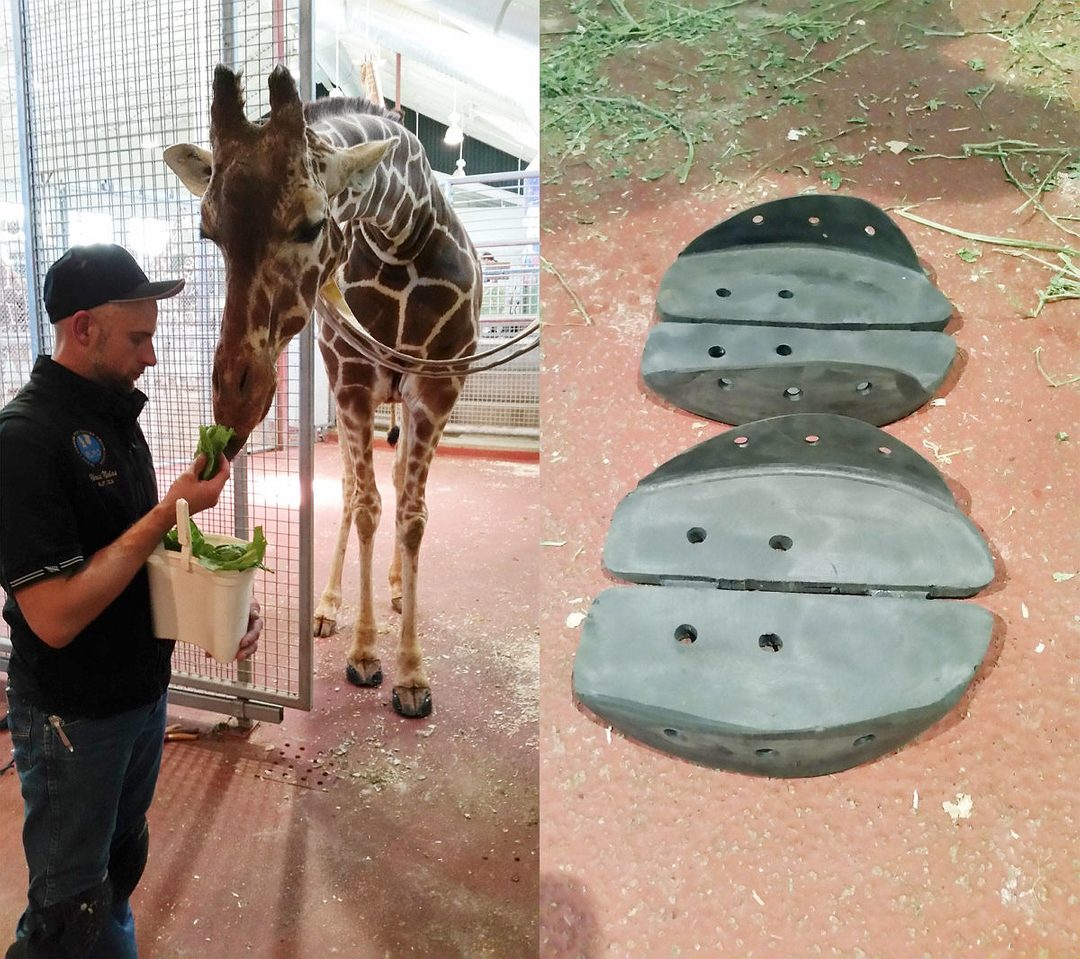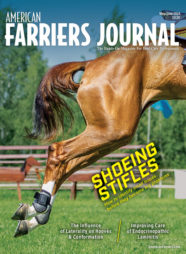Two farriers teamed up to serve an unprecedented shoeing client: Twiga the giraffe.
Chris Niclas created rubber shoes for Twiga and partnered with Steve Foxworth, farrier at the Cheyenne Mountain Zoo in Colorado Springs, Colo., and president of the Equine Lameness and Prevention Organization (ELPO), to apply them May 4, reports the Sequim Gazette. The 16-year-old giraffe has osteoporosis and arthritis.
Fortunately for Twiga, Niclas, a farrier from Sequim, Wash., specializes in therapeutic shoeing.
Niclas has been using rubber shoes and adhesive glue rather than a traditional metal horseshoe and nails since 2007 for his farrier business. Other farriers, including Mark Plumlee, Garrett Ford and Gene Ovenick, influenced him to use this method.
Foxworth recruited Niclas to customize shoes for Twiga, but it was his passion drove him to take part in the experimental process. Niclas’ work for Twiga was on a volunteer-basis.
Niclas told the Sequim Gazette that using rubber shoes and adhesive glue on Twiga was a first for giraffes and exotic animals overall, to his knowledge.
According Dr. Liza Dadone, head veterinarian and vice president of the mission and program at the Cheyenne Mountain Zoo, the shoes themselves were not the only first resulting from Twiga’s shoeing.
“This is the first time a giraffe let shoes be applied to it awake,” Dadone says.
Niclas says that he did not want fear of failure to hold him back. In April, he was part of an unsuccessful attempt to apply the shoes due to a lack of cooperation on Twiga’s part.
At the Cheyenne Mountain Zoo, animals are trained to actively participate in their healthcare rather than being cared for under sedation, Dadone explains. Giraffes, such as Twiga, are trained by zoo staff to put their feet up on blocks for hoof maintenance.
On the second try, Twiga responded well and exemplified this training.
“Immediately the giraffe shifted her weight to test out the shoe,” says Dadone. “She came back over and put her foot on the block to put the second one on.”
“She was very happy standing on it,” Niclas says. “She noticed the difference and was more than happy to let us work on the other foot.”
The shoes are “helping ease the pressure on her joints and to stabilize her” says Andrea Bolt, public relations and social media manager.
Dadone estimates that Twiga will wear the shoes for 6 weeks. After that, zoo staff will assess Twiga’s feet to decide the best course of action in continuing her treatment.
According to Bolt, the zoo hopes that the results this experience yields will be useful to veterinarians at other zoos who may consider using therapeutic rubber shoes to help their animals.








Post a comment
Report Abusive Comment